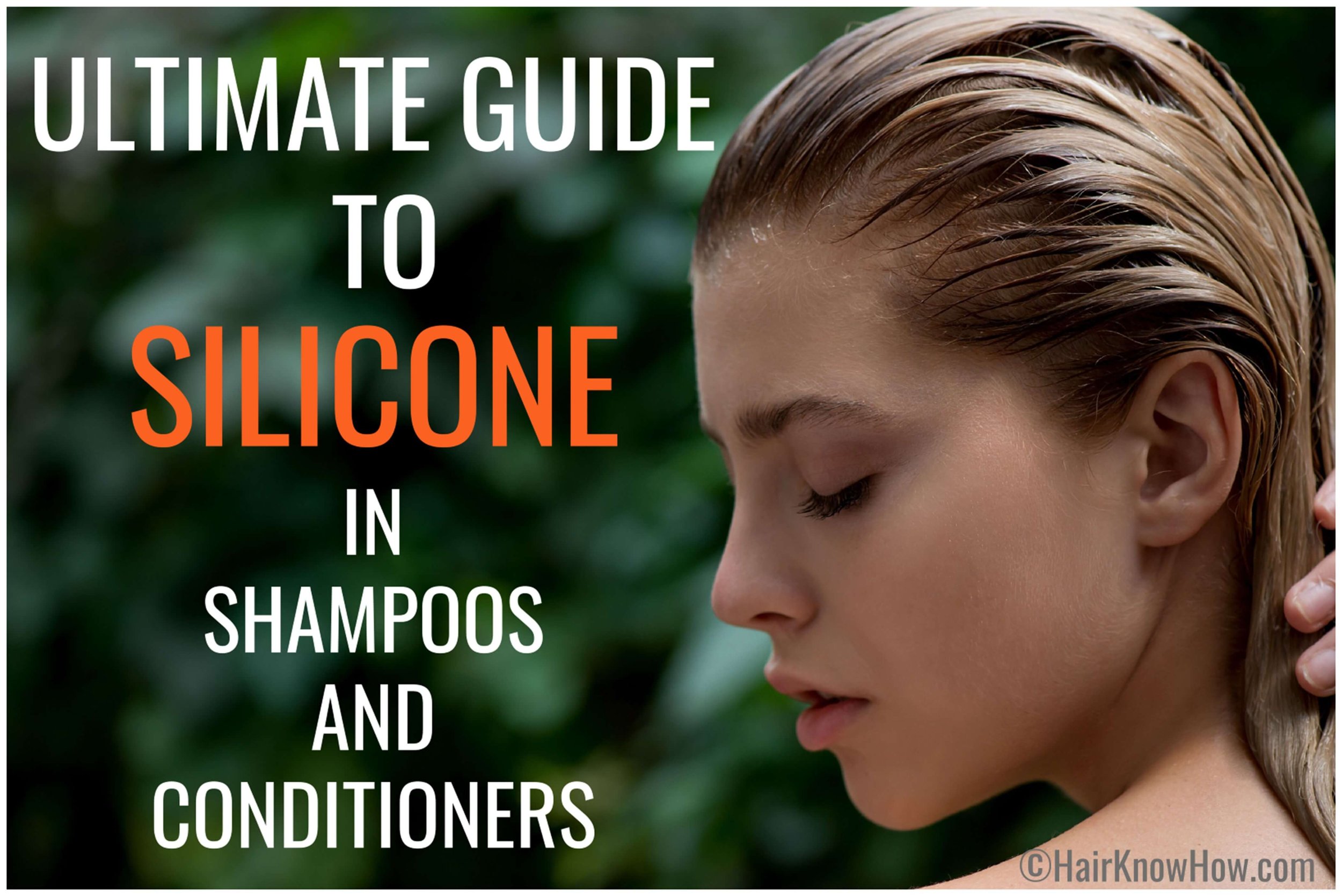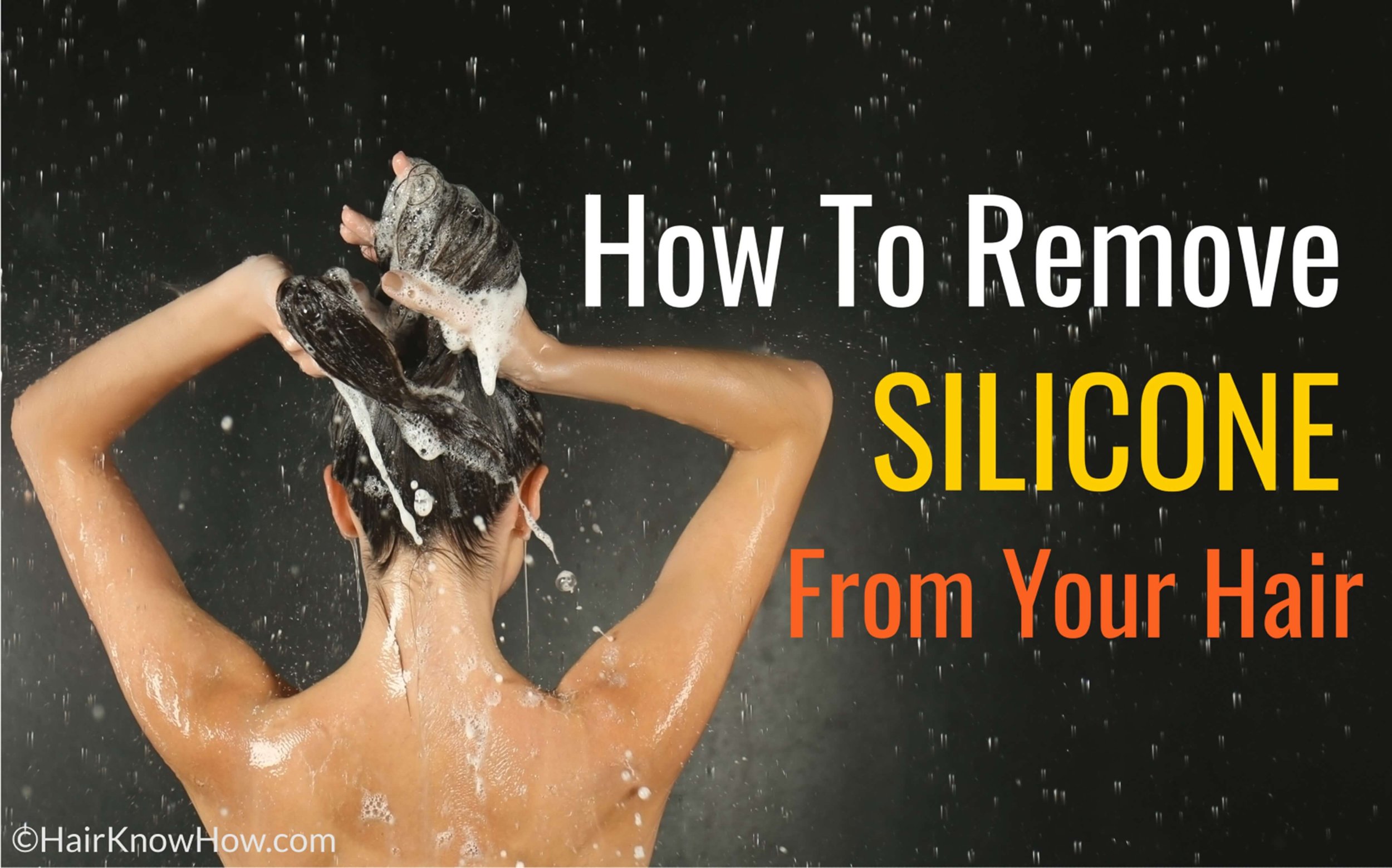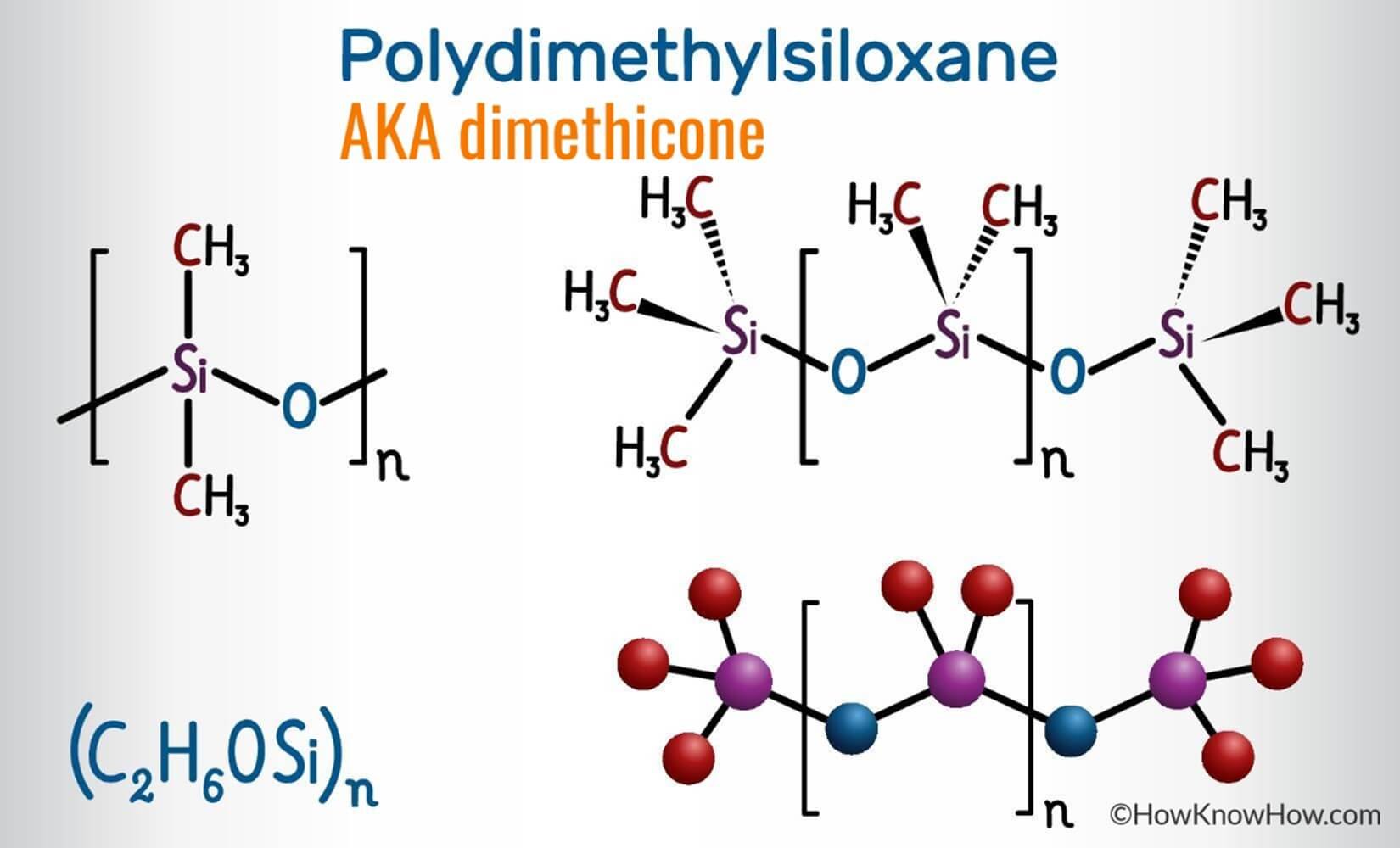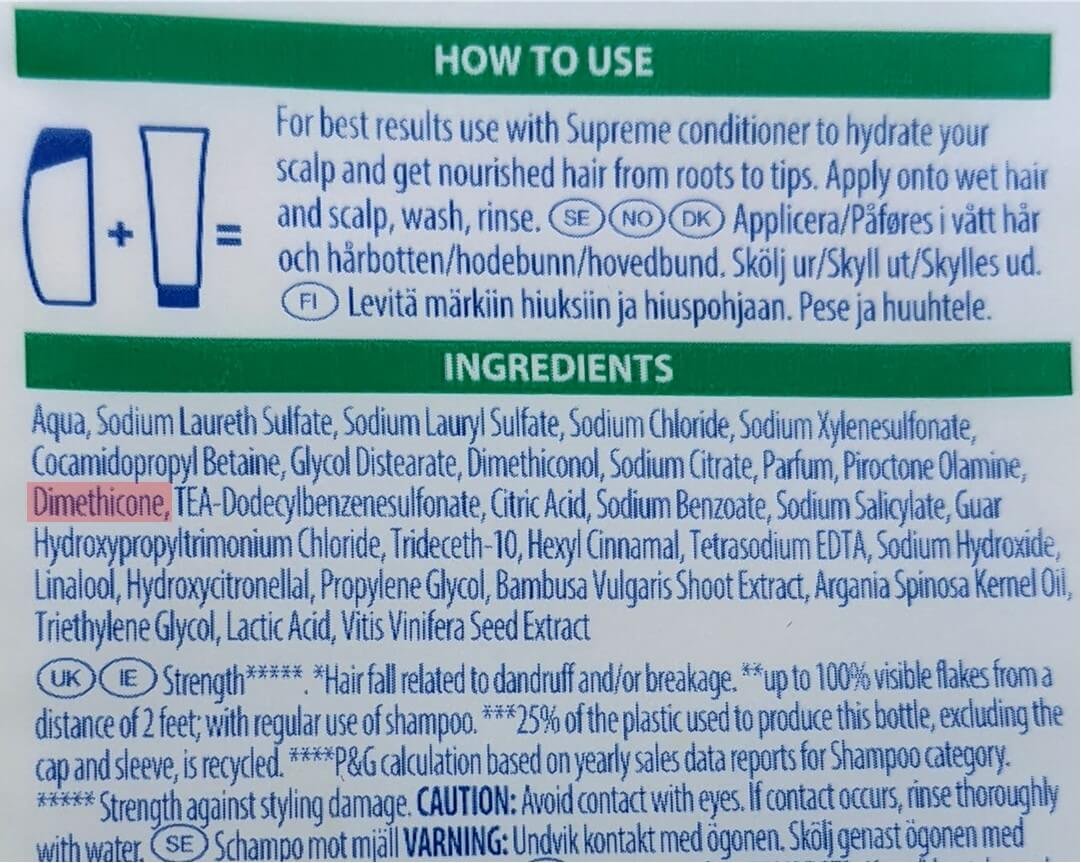Updated January 2023 By Dr Jonathan Palmer
Ultimate Guide To Silicones In Hair Shampoos And Conditioners
Why are silicones found in so many haircare products?
Silicones are found in a wide variety of hair care and personal care products, including shampoos and conditioners. Their inclusion into so many products is due to their wide-ranging, multifunctional properties (detailed below), including their excellent biocompatibility (i.e. they are very safe). The functions of the silicone will depend on the type of silicone present and are selected by the manufacturer depending on how they want their product to leave your hair feeling and the claims they would like to make about the product.
Silicones typically result in the following:
Improved hair feel, making hair feel soft and smooth
Easier wet and dry combability
Provide increased colour protection
Help protect against heat damage
Improve curl retention
Give a perception of moisturisation
Reduces flyaway and control frizz
Increases shine and lustre
Helps control hair volume
Silicones were first introduced into hair conditioning products to increase lustre, softness and other “desirable conditioning properties” we now typically expect from a conditioner. Their use was expanded into 2:1 shampoo and conditioning products in 1987 by Procter and Gamble, and today many haircare brands use them in shampoos.
There has been controversy regarding the use of silicone-containing products on hair by some consumers, which we will go into further below.
As an Amazon Associate, I earn from qualifying purchases - Click here to read our Affiliate Disclaimer
These are sulfate and silicone-free shampoo and conditioners we have used ourselves and recommend to everyone looking to experiment with silicone-free shampoos. All Faith-in-nature shampoos and conditioners are sulfate and silicone-free, with many containing essential hair oils such as coconut oil, making them a very healthy and welcome addition to your hair regime. The Faith-in-nature products we have tested have possessed, in our opinion, a very soft fragrance. Both are certainly worth trying. Let us know how you get on!
Which silicones are found in shampoos and conditioners?
The most common synthetic (artificial) silicones found in shampoos and conditioners include dimethicone (also known as polydimethylsiloxane, dimethylpolysiloxane), dimethiconol, bis-aminopropyl dimethicone, amodimethicone and cyclomethicone dimethicone. Other types of silicone include amino silicones, siloxy silicates, and anionic silicones.
The effect on hair of different types of silicone within the product shampoos and conditioners (Ref)
How to remove silicone from your hair?
There are many different types of silicones, each with varying degrees of water solubility, making some more difficult to dissolve and remove from hair. Dimethicone especially can be challenging to remove with standard sulfate-containing shampoos and especially sulfate-free shampoo formulations.
Clarifying and Cleanser shampoos are effective at removing even stubborn silicones
To remove stubborn silicones, a clarifying and cleansing shampoo is most effective. Clarifying and cleansing shampoos have a higher concentration of sulfate chemistry - increasing their cleaning strength. However, when it comes to sulfate-containing shampoos, most consumers should avoid regular use and opt for sulfate-free shampoo alternatives.
As an Amazon Associate, I earn from qualifying purchases - Click here to read our Affiliate Disclaimer
Using a cleansing shampoo is an effective way of removing dirt and grease from hair. P&G's Head and Shoulders make potent and effective cleansing shampoos that have been developing over many decades. Their cleansing deep clean shampoo is undoubtedly an effective cleaner, with many clients noting how little of the product they need to use for effective cleaning. Start using a cleansing shampoo every other wash and increase the frequency of usage if required.
Use a good cleansing shampoo no more than twice a month or if you believe you have silicone buildup or your hair is especially greasy and dirty. Do not overuse clarifying and cleansing shampoos, as they will also strip your hair of all the oils and nutrients. Striping your hair of nutrients and oils will make your hair feel dry and ultimately increase porosity and breakage.
What is dimethicone?
Dimethicone is a hydrophobic (water-hating) molecule that absorbs or sticks to the surface of hair easily, conferring many beauty and health benefits to hair. These include reducing cuticle loss from abrasive damage caused by brushing and other types of physical manipulation. Dimethicone is also a humectant which helps keep hair moist and appear smoother and more shiny increasing lustre. Dimethicone creates a physical-chemical barrier on the hair’s surface, preventing water and other molecules from escaping or entering (more on this in a moment!).
Chemical structure of the silicone dimethicone found in shampoo, conditioners and many personal care products
How does dimethicone absorb (stick) to hair?
Dimethicones, adsorb better to virgin undamaged hair and root than hair tips. The difference in specificity is because hydrophobic substances (water-hating) tend to aggregate together. Virgin intact hair is typically more hydrophobic due to a fatty acid layer on the cuticle layer’s surface. This fatty acid is called 18-MES. 18-MES helps protect hair but accumulates damage over time through mechanical and chemical processes and heat treatments. The reduction in the fatty acid layer makes hair increasingly hydrophilic (water-loving) towards the ends furthest from the scalp. To increase the attachment of dimethicone on chemically treated and damaged hydrophilic hair, shampoos and conditioners contain cationic bridging agents that increase the affinity (attachment strength) between hair and silicone.
How much silicone is in shampoo and conditioners?
The concentration of silicones present within a hair product is typically 0.5%w/v; however, this can vary with hair conditioners targeted against thicker hair types (i.e. Type B and Type C hair), i.e. containing between 3-5%w/v silicone.
How to identify silicone within a shampoo or conditioner
Most silicones can be spotted within the list of ingredients on the back of every bottle of shampoo, conditioner, hair mask etc. The chemical name can differ, but in most cases, they end with “cone” at the end of the word, for example, dimethicone, amodimethicone and cyclomethicone.
Many, but not all, shampoos and conditioners will also state on the front of the bottle that it is “silicone-free” we have, however, found many brand products that are silicone free but do not shout about it on the front of their packaging.
Example of silicone dimethicone within popular high street shampoo
How to tell how much silicone is within a shampoo or conditioner?
The order of the ingredients on the back of every product gives clues about the concentration of those ingredients.
The closer the named silicone (or any other chemical) ingredient is to the top of the list, the greater its relative concentration within the hair care product.
This rule is true with all ingredients within any product; ingredients are listed in order of concentration. This super useful fact is also helpful when buying other types of cosmetic products.
What are the alternatives to silicone in shampoos and conditioners?
There are a large number of alternative silicone chemistries already on the market within many of our high-street haircare products; these include:
Alternatives to silicone within shampoos, conditioners and hair masks (Ref)
These silicone alternatives offer many of the same health and beauty effects as silicone, enhancing a product’s conditioning properties, such as protection from abrasive damage, repair effect, gloss and lustre enhancement.
As an Amazon Associate, I earn from qualifying purchases - Click here to read our Affiliate Disclaimer
Boucleme is a relative newcomer to the beauty market and started trading in 2013. They are purely focused on curls and bring a beautiful range of naturally based silicone-free products, including cleansing, conditioning and styling, to you. Our feedback from clients using Boucleme has been fantastic, so we wholeheartedly recommend this brand. Give either the the shampoo and Curl Conditioner a go and achieve excellent hair cleaning and conditioning, silicone-free. Be sure to let us know how you get on.
Why are some consumers avoiding silicones in their shampoo and conditioner?
There are a lot of benefits to silicone (detailed above); however, as with some ingredients, “less is sometimes more”.
Long-term use of shampoos and conditioners with silicones can result in the excessive buildup of silicone on the surface of your hair, creating a physical and chemical barrier that:
Weighs down on curls and waves, causing a noticeable “droop“, making it especially difficult to control and style hair - especially for finer, more delicate hair types such as Type A hair
Prevents water from getting out (and in)
Interferes with nutrients entering and nourishing the fibres over time. This lack of nourishment can, in itself, result in increased breakage. This can essentially reduce the benefits of using conditioners, oils, hair masks and deep-conditioning treatments
Increases the difficulty of chemically treating hair - such as when chemical colouring and straightening processes. This difficulty can lead to increased treatment times and potentially higher concentrations of peroxides etc., required to get the desired look, potentially adding to treatment costs and more significant hair damage
Shopping for alternative silicone free shampoo and conditioners
When researching and searching the scientific literature before writing this article, we found no scientific evidence to back up the above statements about any silicone-mediated hair damage that so readily appears and is widely discussed on the internet.
We were quite supprised by the lack of scientific data regarding silicone-mediated damage to hair, but perhaps this scientific work has just not been performed yet. Either way, some data contributing to the silicone debate would be most welcome! If you the reader do come across any scientific evidence, then please do contact us and let know about it, and we’ll update our information. :)
Sufficed to say that the observation that too much silicone buildup could be detrimental to hair is very plausible. One mechanism for this is by preventing and excluding nutrients and oils from entering the cortex. Thus periodic (say once a month) deeper cleaning using a clarifying cleansing shampoo is advised.
Is silicone toxic?
No, the types of silicone found in hair care and other personal contact products are not toxic to humans either through the skin, hair contact or inhalation and digestion.
Silicones generally are not known biological or chemical hazards, and no environmental or safety data currently suggests that silicone is toxic to the environment, including aquatic systems.
Silicone buildup can affect hair by weighing it down, changing its physical appearance. Silicone can affect water and potentially nutrient penetration into fibres that could go on to affect hair health.
The effects of silicones can be minimised by using products containing silicone less often and periodically (one every 2 - 4 weeks) and using a clarifying and cleansing shampoo to remove any silicone buildup if present.
As an Amazon Associate, I earn from qualifying purchases - Click here to read our Affiliate Disclaimer
We use these beautiful hair masks from Garnier ourselves. They make an excellent silicone-free alternative to conditioners that you can use every time you wash your hair. They are fantastic and give your hair a nutrient boost -exactly what it needs. We use the coconut mask, which in our opinion, smells great and boosts hair health due to those all-important coconut oils. Let us know how you get on!
The takeaway message on silicones
There are many known benefits to using shampoos and conditioners containing silicones, with some potential but still, as yet, unproven negatives -this, of course, may change as the scientific knowledge develops. Silicones are hard to avoid as they are in many hair care products. Suppose you believe you have excessive silicone buildup on your hair, especially if you have a fine hair type (Type A). In that case, the occasional use of clarifying or cleansing shampoo is recommended. But in summary, if you include periodic cleansing shampooing into your regime, you won’t have much to worry about.
We hope you found this silicone guide useful and informative. Please let us know if you have any questions regarding silicone or want us to cover another hair topic.
If you are worried about your hair or want to know what are the best products for your personal hair, then give HairKnowHow a try. Check out our shop using the link, or contact us if you have any questions.
The Hairknowhow team.








